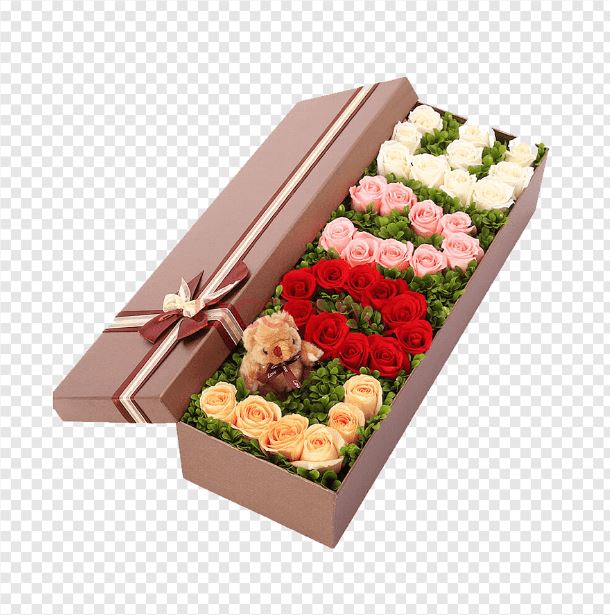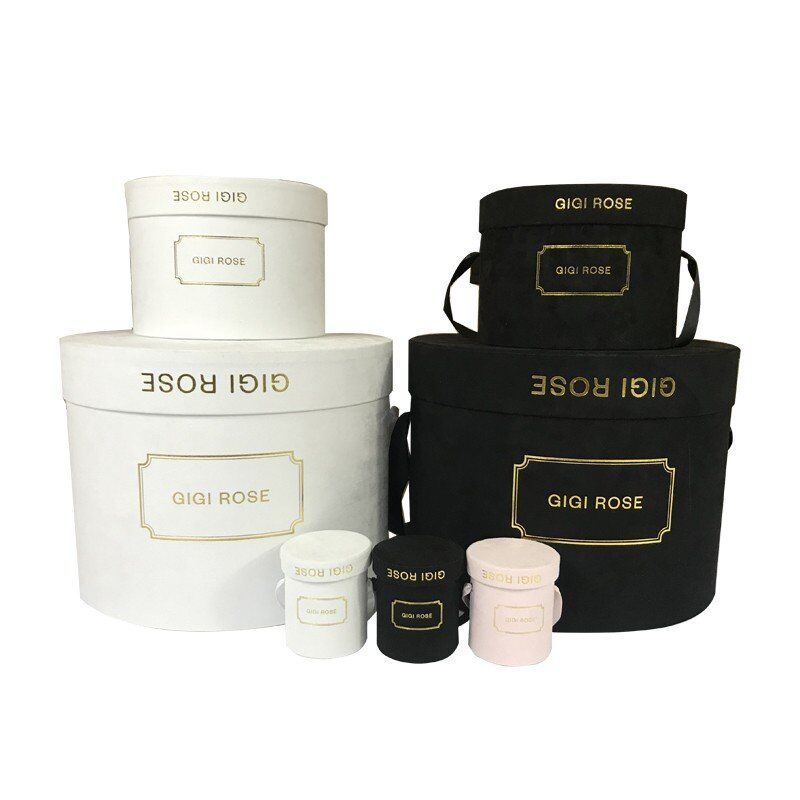- All
- Product Name
- Product Keyword
- Product Model
- Product Summary
- Product Description
- Multi Field Search
Views: 197 Author: XianDa Publish Time: 2024-12-23 Origin: Site

Content Menu
● How to Make Flower Box Arrangements
>> Visual Arrangement Techniques
>> Signs of Overwatering or Underwatering
>> Spring
>> Summer
>> Fall
>> Winter
● Creative Ideas from the Flower Factory
● Troubleshooting Common Issues
Flower box arrangements are a beautiful way to add color and life to your home or garden. Whether you're decorating your windowsills, porch, or creating a centerpiece for a special event, mastering the art of flower box arrangements can elevate your space. In this comprehensive guide, we'll explore the steps to create stunning flower box arrangements, with tips from experts including those at the renowned Flower Factory.
The first step in creating a flower box arrangement is selecting the appropriate container. Consider the following factors:
- Size: Ensure the box fits your intended space and can accommodate your desired plants.
- Material: Options include wood, plastic, metal, or ceramic. Each has its pros and cons in terms of durability and aesthetics.
- Drainage: Proper drainage is crucial for plant health. Choose a box with drainage holes or add them yourself.
- Traditional Wooden Boxes: These offer a rustic charm and can be painted or stained to match your decor.
- Metal Boxes: They provide a modern look but can heat up quickly in direct sunlight.
- Plastic Boxes: Lightweight and often more affordable, these are great for beginners.
- Ceramic Pots: These add elegance but are heavier and may require more care to prevent cracking.


When choosing plants for your flower box arrangement, consider the "thriller, filler, spiller" technique:
1. Thriller: Tall, eye-catching plants that serve as the focal point.
2. Filler: Medium-height plants that add volume and color.
3. Spiller: Trailing plants that cascade over the edges of the box.
The Flower Factory recommends selecting a variety of plants with different textures and colors to create visual interest. Some popular choices include:
- Thrillers: Geraniums, Canna lilies, Salvia
- Fillers: Petunias, Begonias, Impatiens
- Spillers: Sweet potato vine, Lobelia, Bacopa
- Spring: Pansies, tulips, and daffodils bring vibrant colors as they bloom early in the season.
- Summer: Heat-tolerant options like petunias, marigolds, and zinnias thrive in warmer weather.
- Fall: Incorporate autumn hues with chrysanthemums and ornamental kale for a seasonal touch.
- Winter: Use evergreen branches and cold-hardy plants like pansies or ornamental cabbage for winter interest.
Before planting, follow these steps to prepare your flower box:
1. Clean the box thoroughly if it's been used before.
2. Line the box with plastic if it's made of wood to protect it from moisture.
3. Add a layer of gravel or small rocks at the bottom for improved drainage.
4. Fill the box about 2/3 full with high-quality potting soil.
To improve soil quality:
- Mix in compost or organic matter to enrich the soil.
- Use slow-release fertilizers to provide nutrients over time.
Now comes the fun part – arranging your plants! Follow these steps:
1. Start with the thriller plants, placing them towards the back of the box.
2. Add filler plants around the thrillers to create a full look.
3. Place spiller plants near the edges of the box to trail down.
4. Gently remove plants from their containers and loosen the roots before planting.
5. Plant at the same depth as they were in their original containers.
6. Fill in any gaps with additional soil and press gently to secure the plants.
Consider these techniques for an aesthetically pleasing arrangement:
- Layering Heights: Use tall plants at the back and shorter ones at the front for depth.
- Color Balancing: Distribute colors evenly throughout the arrangement for harmony.
Proper care is essential for keeping your flower box arrangement looking its best. The Flower Factory suggests:
- Water regularly, especially during hot weather. Check soil moisture daily.
- Fertilize every 2-4 weeks with a balanced, water-soluble fertilizer.
- Deadhead spent blooms to encourage continued flowering.
- Trim back any overgrown plants to maintain the desired shape.
Be vigilant about signs of distress in your plants:
- Overwatering: Yellowing leaves and wilting can indicate too much water.
- Underwatering: Brown leaf tips or crispy edges suggest insufficient moisture.
Adapt your flower box arrangements to different seasons:
Focus on bright colors with flowers like daffodils and tulips complemented by pansies for texture.
Use heat-tolerant flowers such as geraniums and petunias alongside trailing varieties like sweet potato vine.
Incorporate seasonal favorites like asters and ornamental grasses for rich autumn hues.
Use evergreens and winter-blooming varieties like hellebores for year-round interest.
The Flower Factory offers these innovative ideas for unique flower box arrangements:
1. Monochromatic Theme: Use various shades of a single color for a sophisticated look.
2. Edible Arrangements: Incorporate herbs and edible flowers for functional beauty.
3. Succulent Gardens: Create low-maintenance arrangements featuring succulents that thrive indoors or outdoors.
4. Vertical Gardens: Use hanging flower boxes on walls or fences for stunning vertical displays.
Consider these examples when planning your arrangements:
- A window box filled with bright red geraniums paired with white bacopa creates striking contrast.
- A succulent arrangement combining echeveria with trailing ivy offers low maintenance while looking chic.
Even with proper care, you may encounter some challenges. Here are solutions to common problems:
- Wilting Plants: Check soil moisture; if dry, water more frequently.
- Yellowing Leaves: This could indicate overwatering or nutrient deficiency; adjust watering habits accordingly.
- Pest Infestations: Inspect plants regularly; treat any infestations promptly using organic pesticides if necessary.
For those looking to take their flower box arrangements to the next level, consider these advanced techniques recommended by experts at Flower Factory:
1. Layering Bulbs: Plant bulbs beneath annuals for continuous blooms throughout different seasons.
2. Companion Planting: Combine flowers that benefit each other; marigolds repel pests from other flowers effectively.
3. Texture Mixing: Incorporate various leaf textures – from broad leaves to fine foliage – for added depth.
The Flower Factory encourages sustainable gardening practices:
- Use organic fertilizers and pesticides whenever possible.
- Incorporate native plants into your arrangements to support local wildlife.
- Practice water conservation by selecting drought-tolerant varieties and mulching appropriately.
1. How often should I water my flower box arrangement?
Answer: The frequency depends on factors like climate, plant types, and box size. Generally, water when the top inch of soil feels dry; during hot weather, this might mean daily watering.
2. Can I mix flowers and vegetables in a flower box?
Answer: Yes! Many vegetables and herbs can be attractive additions to flower boxes as long as they have similar light and water requirements.
3. How do I prevent my flower box from becoming waterlogged?
Answer: Ensure proper drainage by using a box with holes, adding gravel at the bottom, and avoiding overwatering practices.
4. What are the best plants for a shaded flower box?
Answer: Good options include impatiens, begonias, fuchsias, and coleus; consult local nurseries for specific recommendations based on your climate conditions.
5. How can I keep my flower box looking good all season?
Answer: Regular maintenance is key; deadhead spent blooms, trim overgrown plants as needed, fertilize regularly, and replace any finished blooms promptly.
By following these guidelines and incorporating tips from experts at Flower Factory, you'll be well on your way to creating stunning flower box arrangements that will beautify your space throughout every season.
Citations:
[1] https://www.thespruce.com/spring-window-boxes-4149843
[2] https://www.youtube.com/watch?v=jm2A_7vyqeI
[3] https://rootandvessel.com/blog/flower-box-ideas-for-every-season
[4] https://www.hallmarkchannel.com/home-and-family/how-to/diy-gift-box-flower-arrangements
[5] https://www.flowerwindowboxes.com/Flower-Box-Arrangement-Ideas-For-Tiny-Spaces-s/393.htm
[6] https://www.youtube.com/watch?v=2hHxnZXfJ6Q
[7] https://www.zucchinisisters.com/window-box-flowers/
[8] https://www.youtube.com/watch?v=C2v0j1nMJ3g
[9] https://www.marthastewart.com/flower-box-ideas-7553678
[10] https://www.helloivyandeve.com/style/2016/5/22/diy-floral-box-arrangement